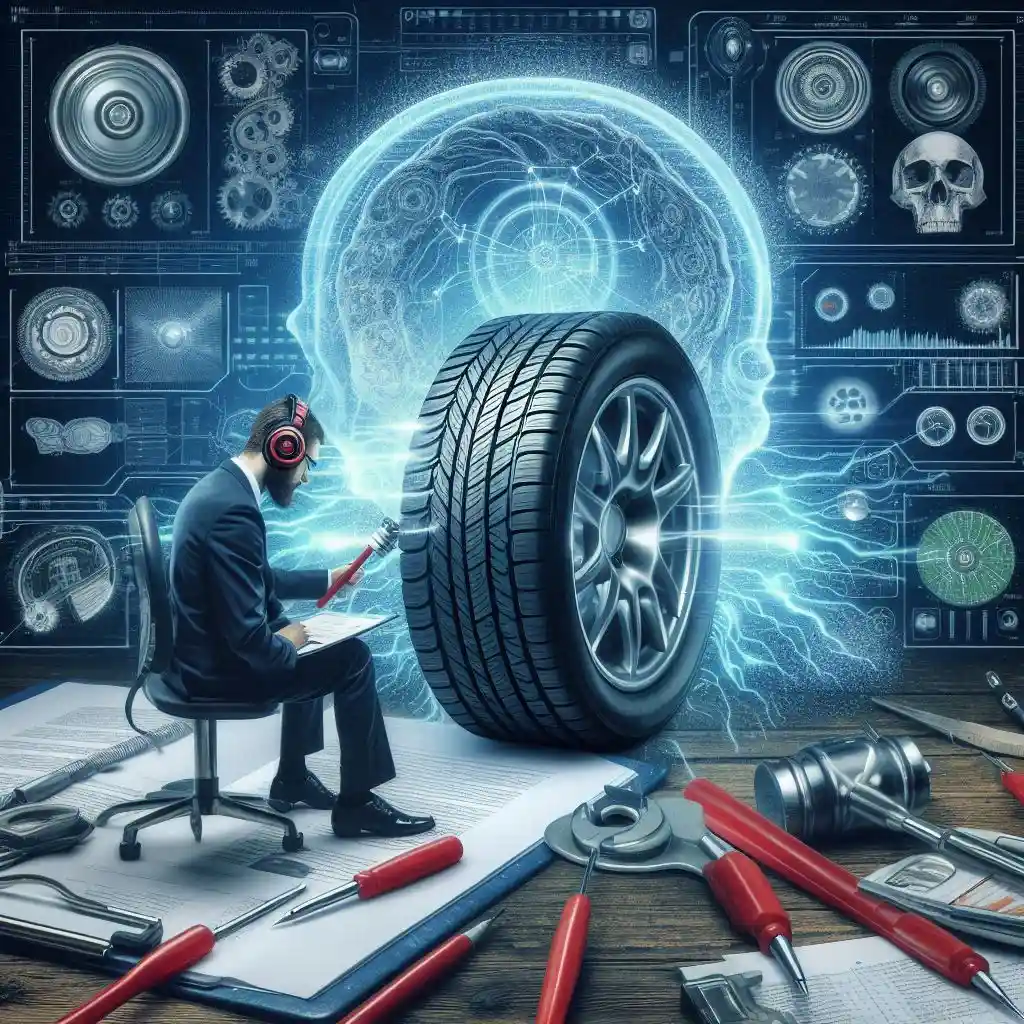In the quest for a smoother, more comfortable ride, one often overlooked factor is tyre noise. The constant hum of tyres on the road can significantly impact your driving experience and overall comfort. This comprehensive guide will explore ten effective ways to reduce tyre noise levels and enhance comfort, ensuring a more pleasant journey for you and your passengers.
Understanding Tyre Noise and Its Impact on Comfort

Before diving into the solutions, it’s crucial to understand what causes tyre noise and how it affects your comfort. Tyre noise is primarily generated by the interaction between your tyres and the road surface. Factors such as tyre design, road conditions, and vehicle speed all contribute to the level of noise produced.
Excessive tyre noise can lead to:
- Increased driver fatigue
- Difficulty in communication within the vehicle
- Reduced overall driving comfort
- Potential long-term hearing issues
By learning how to reduce tyre noise levels, you can significantly improve your driving comfort and enjoy a more peaceful ride.

1. Choose Tyres Designed to Reduce Noise Levels
One of the most effective ways to reduce tyre noise levels and boost comfort is to select tyres specifically engineered for noise reduction. Many tyre manufacturers now offer models designed to minimize road noise while maintaining performance.
When shopping for noise-reducing tyres, look for:
- Asymmetric tread patterns
- Continuous ribs in the centre of the tyre
- Noise-reducing foam inserts
These features work together to disrupt air flow patterns and absorb vibrations, effectively reducing tyre noise levels and enhancing comfort.
2. Maintain Proper Tyre Inflation
Proper tyre inflation is crucial not only for safety and fuel efficiency but also for reducing tyre noise levels and improving comfort. Underinflated tyres can cause excessive road contact, leading to increased noise and reduced comfort.
To reduce tyre noise levels:
- Check your tyre pressure regularly, at least once a month
- Follow the manufacturer’s recommended pressure levels
- Adjust pressure for different load conditions
By maintaining the correct tyre pressure, you can significantly reduce tyre noise levels and enhance your overall driving comfort.
3. Rotate Your Tyres Regularly

Regular tyre rotation is another effective method to reduce tyre noise levels and maintain comfort. Uneven wear can cause tyres to produce more noise, especially if the wear pattern becomes severe.
To reduce tyre noise levels through rotation:
- Follow your vehicle manufacturer’s recommended rotation pattern
- Rotate tyres every 5,000 to 8,000 miles
- Inspect tyres for uneven wear during rotation
By keeping your tyres evenly worn, you can minimize noise production and maintain a comfortable ride.
4. Align Your Wheels Properly
Proper wheel alignment is essential for reducing tyre noise levels and ensuring optimal comfort. Misaligned wheels can cause tyres to wear unevenly, leading to increased noise and reduced comfort.
Signs that your wheels may need alignment to reduce tyre noise levels include:
- Vehicle pulling to one side
- Uneven or rapid tyre wear
- Steering wheel vibration
Regular wheel alignments can help maintain even tyre wear, reduce noise levels, and improve overall driving comfort.
5. Use Sound-Deadening Materials
While not directly related to the tyres, using sound-deadening materials in your vehicle can significantly reduce the perceived tyre noise levels and enhance comfort. These materials work by absorbing and dampening sound vibrations.
Areas to apply sound-deadening materials to reduce tyre noise levels:
- Wheel wells
- Floor panels
- Door panels
By reducing the transmission of tyre noise into the cabin, you can create a more comfortable and quieter driving environment.
6. Choose Appropriate Tyre Size

While not directly related to the tyres, using sound-deadening materials in your vehicle can significantly reduce the perceived tyre noise levels and enhance comfort. These materials work by absorbing and dampening sound vibrations.
Areas to apply sound-deadening materials to reduce tyre noise levels:
- Wheel wells
- Floor panels
- Door panels
By reducing the transmission of tyre noise into the cabin, you can create a more comfortable and quieter driving environment.
7. Consider Your Driving Surface
The type of road surface you frequently drive on plays a crucial role in tyre noise levels and comfort. Some surfaces, like coarse asphalt or concrete, naturally generate more noise than others.
To reduce tyre noise levels based on driving surface:
- Choose tyres optimized for your most common road type
- Be aware that noise levels may change on different surfaces
- Consider adjusting your speed on noisier road surfaces
While you can’t always choose your driving surface, being aware of how it affects tyre noise can help you make informed decisions to improve comfort.
8. Implement a Tyre Noise Reduction System
Some vehicles come equipped with active noise control systems that can help reduce tyre noise levels and enhance comfort. These systems use sound waves to cancel out unwanted noise, including tyre noise.
If your vehicle doesn’t have a built-in system, consider:
- Aftermarket active noise control systems
- Noise-canceling speakers for your car
- Sound-insulating window films
These technological solutions can significantly reduce perceived tyre noise levels, creating a more comfortable driving environment.
9. Address Suspension Issues
Your vehicle’s suspension system plays a crucial role in absorbing road vibrations and reducing tyre noise levels. Worn or damaged suspension components can lead to increased noise transmission and reduced comfort.
To reduce tyre noise levels through suspension maintenance:
- Regularly inspect shock absorbers and struts
- Replace worn bushings and mounts
- Ensure all suspension components are properly tightened
A well-maintained suspension system can effectively dampen road vibrations, reducing tyre noise and enhancing overall driving comfort.
10. Drive at Optimal Speeds
The speed at which you drive can significantly impact tyre noise levels and comfort. Generally, tyre noise increases with speed due to increased air displacement and road contact.
To reduce tyre noise levels through speed management:
- Be aware of the speed at which your tyres are quietest
- Reduce speed slightly on rough or noisy road surfaces
- Use cruise control to maintain a steady speed, which can help reduce noise fluctuations
By being mindful of your driving speed, you can often find a sweet spot that balances progress and comfort, effectively reducing tyre noise levels.

Conclusion: Achieving the Perfect Balance of Reduced Tyre Noise and Enhanced Comfort
Reducing tyre noise levels is not just about creating a quieter ride; it’s about enhancing overall driving comfort and enjoyment. By implementing these ten strategies, you can significantly reduce tyre noise levels and create a more pleasant driving environment.
Remember, the key to success lies in a holistic approach. Combine multiple methods to reduce tyre noise levels for the best results. Start with selecting the right tyres, maintain them properly, and consider additional noise-reduction techniques for your vehicle.
At Sandagiri Battery and Tire Works, we understand the importance of a quiet, comfortable ride. Our team of experts is dedicated to helping you find the perfect solution to reduce tyre noise levels and enhance your driving experience. We offer a wide range of noise-reducing tyres and can provide personalized advice on the best options for your specific vehicle and driving needs.
Don’t let tyre noise compromise your comfort any longer. Take the first step today towards reducing tyre noise levels and boosting your driving comfort. Contact Sandagiri Battery and Tire Works for further details and to get the correct option tailored to your needs. Our experienced professionals will guide you through the process, ensuring you achieve the optimal balance between performance and comfort.




